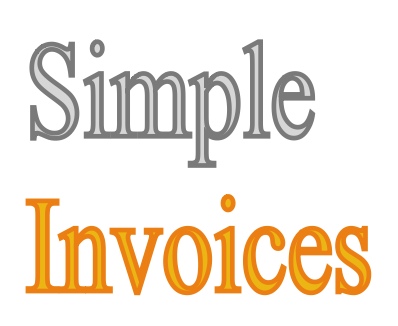Forum Replies Created
-
AuthorPosts
-
RRowley
ParticipantPlease give me examples of what happens in your transactions that requires a negative number?
RRowley
ParticipantUse the class field to assign a user defined class. The in the style.css file add that class with the style adjustments you want.
RRowley
ParticipantYou are inheriting CSS settings from the standard CSS file (css\main.css). Use the css file in the same directory as your template to override default settings. Basically, you’ll need to change the TH settings; which are generated by the print_if_not_null function. You should be able to control font size in the same manner.
RRowley
ParticipantThis is likely due to the changes to use globalization for date, number, etc. formats. You need to make your own version of the template is you aren’t already. See the “Invoice Templates & Styles” topic on the left. Once you have your own template version, edit the template.tpl file to use the international date with the format of long. Here is an example of what this would look like:
field={$invoice.date_original|utilIntlDate:$invoice.locale:"long"}RRowley
ParticipantI need to know just what it is that you are wanting to be implemented.
RRowley
ParticipantIs there a reason you can’t update to php 8.1 or greater thereby being able to load the current version of SI?
RRowley
ParticipantRefer to the Invoice Templates & Styles topic on the left.
RRowley
ParticipantThe issue is that the si_invoice_item_tax file has a foreign key set on the ID field of the si_invoice_items table. You need to make note of the foreign key settings and then delete the foreign key. Next add the auto increment to si_invoice_items ID field. Finally, add the foreign key back on the si_invoice_item_tax table.
RRowley
ParticipantThe error appears to complain that there is an attempt to add and si_invoice_items record with a duplicate value of 0 for its primary key. The primary key is (should be) the ID field. This field could only be assigned 0 if it does not have the auto increment setting on. User phpMyAdmin to verify this. There are two issues to correct. One is that there is now a record in that table with a 0 value for its ID field. That is a problem. I suggest you find which invoice this is for and delete it. If you don’t find a record with a 0 ID value, it was probably created for the invoice you are adding, say for the first invoice item and then it got an error on the second. Once you’ve cleared up the 0 ID issue, you can set the auto increment setting on the table. This can be done in phpMyAdmin. If you had to delete and invoice, add it back now. Make note of the original invoice number to reference it to the new number assigned to it for your records. Once you’ve taken care of any deleted invoice, you can add the invoice you were trying to add when this error occurred. All should be OK at this point.
RRowley
ParticipantGreat news. Thank you for letting me know.
November 7, 2023 at 9:27 am in reply to: Tutorial needed to upgrade from simpleinvoices 2011 to 2023 #2007RRowley
ParticipantConcerning unable to apply foreign key changes error, the exception message tells you what the issue is. From your error log:
The records in the FOREIGN KEY TABLE are most likely invalid and should be deleted. FOREIGN KEY TABLE COLUMN REFERENCE TABLE COLUMN INVALID VALUE ———————— —————— ———————– ——— ————- invoice_item_tax invoice_item_id invoice_items id 10 invoice_item_tax invoice_item_id invoice_items id 11 invoice_item_tax invoice_item_id invoice_items id 12 invoice_item_tax invoice_item_id invoice_items id 13
This is saying that there are si_invoice_item_tax table records with an id of 10, 11, 12 and 13, containing invoice_item_id values that do not exist in the si_invoice_items table.
There are two ways to resolve this. One is to create si_invoice_itens records that contain these values. The other is to delete these records from the si_invoice_item_tax table. Since the orphaned records are likely left over from the deletion of si_invoice_items records that failed to delete associated tax records, the solution to delete the si_invoice_item_tax records with id values of 10, 11, 12 and 13 is likely the best solution.
September 9, 2023 at 7:52 am in reply to: CSS files missing in node_modules folder (weird tooltip behavior) #1989RRowley
ParticipantThank you for pointing this out. I have uploaded a fix to the gitignore file that was causing this, along with the css files that it had erroneously been excluding.
RRowley
ParticipantJust following up to see if your issues have been addressed.
RRowley
ParticipantI notice that the sql file inserts into the si_invoices table before the load of the si_invoice_type table.
Make sure you turn off the check foreign keys option being importing the sql file.
RRowley
ParticipantYou need to determine which product numbers in the inventory table do not have a match to an id field value in the product table. If the product_id of an inventory record is wrong, change it to a correct value. If the inventory product_id should be for a product that is missing, you can add the missing product, get its id and then change the inventory record to the new product. Or you could delete the orphaned inventory record.
Sorry you have to go through this, but once fixed, the database will enforce foreign key settings to prevent future issues.
-
AuthorPosts

Recent Comments